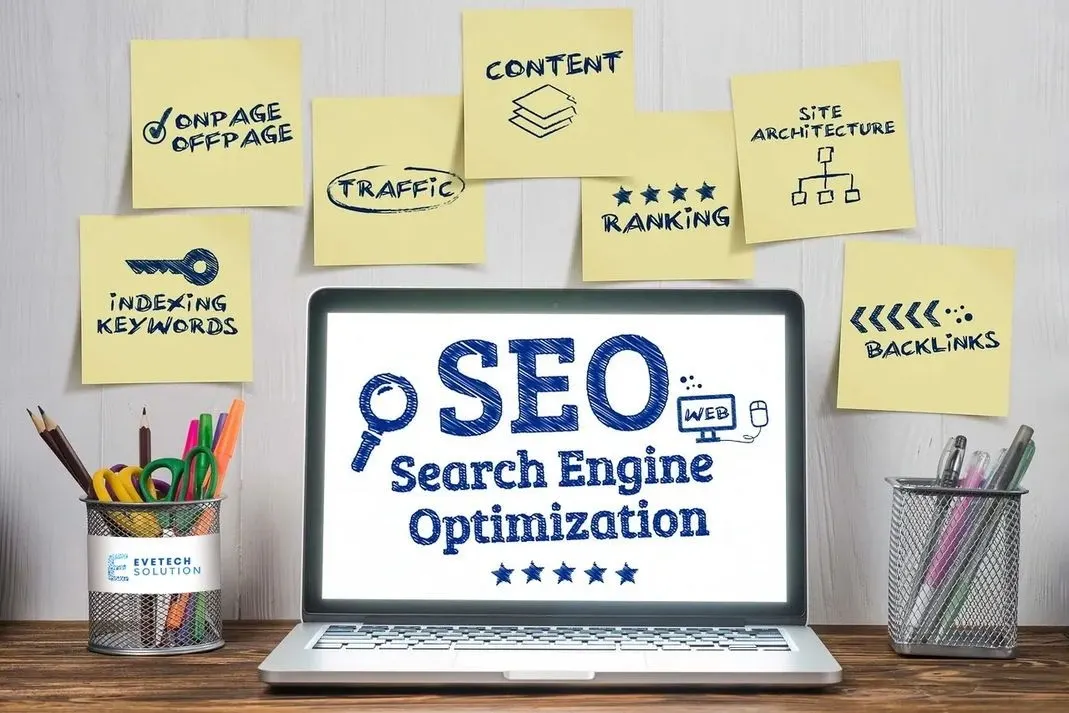SEO On Page Optimization
October 26, 2023

SEO On Page Optimization
In this digital era, establishing a strong online presence is vital for businesses of all sizes. One of the key strategies for accomplishing this is through on-page SEO techniques, specifically designed to optimize individual web pages for improved search engine rankings and increased organic traffic. In this guide, we will delve into on-page SEO strategies that are particularly meaningful for businesses, allowing you to elevate your website's visibility and attract potential clients. On-page SEO elements are high quality content, keyword optimization, meta tags and spoilers, headings, image optimization, page speed, and internal links.
1. High-Quality Content: The Foundation of Your Brand
![]() Content still reigns supreme in the realm of online business. To establish your brand as an industry authority, create top-notch, informative, and engaging content that caters to the needs of your target audience. Providing valuable content builds trust and credibility, increasing the likelihood of turning visitors into customers.
Content still reigns supreme in the realm of online business. To establish your brand as an industry authority, create top-notch, informative, and engaging content that caters to the needs of your target audience. Providing valuable content builds trust and credibility, increasing the likelihood of turning visitors into customers.
It's worth noting that Google prioritizes high-quality content and discourages duplication. Therefore, if you prioritize high-quality content alongside other strategies, achieving a top position on the Search Engine Results Page (SERP) is certainly attainable. However, it's crucial to remember that SEO is an organic strategy, requiring time and patience to secure a prominent position on the first SERP.
2. Keyword Optimization: Targeting the Right Audience
![]() Effective keyword optimization is vital for businesses. Research and select keywords that align with your products or services and strategically incorporate them into your content. However, always prioritize user experience and avoid keyword stuffing, which can have a negative impact on your brand's reputation. Even if google algorithm now prioritizes less on this keyword matters at article. It reminds important at heading and tittle. So dont forget about that.
Effective keyword optimization is vital for businesses. Research and select keywords that align with your products or services and strategically incorporate them into your content. However, always prioritize user experience and avoid keyword stuffing, which can have a negative impact on your brand's reputation. Even if google algorithm now prioritizes less on this keyword matters at article. It reminds important at heading and tittle. So dont forget about that.
3. Meta Tags and spoilers: Your Digital Storefront
Optimize your title tags and meta spoilers to make them not only keyword-rich but also enticing to potential customers. Your meta tags serve as the first point of contact in search results, so they should accurately represent your brand and offerings. If you want to know, what is meta spoilers. You can see the picture below, and observe the text beneath the underlined font. That is an example of the implementation of a meta spoiler
![]()
4. Headings and Subheadings: Structuring Your Message
In the world of SEO, the use of headings and subheadings is a crucial element in structuring your online content effectively. The headings, typically ranging from H1 to H6, serve as signposts for both search engines and readers. The H1 heading, also known as the main title, carries the most weight and should succinctly capture the essence of the content. Subsequent headings, such as H2, H3, and so on, help create a hierarchy, providing a clear outline of the content's structure. This not only enhances the readability and user experience but also assists search engines in comprehending and ranking your content, making it a fundamental aspect of any SEO strategy.
5. Image Optimization: Enhancing Visual Appeal
Image optimization is a crucial factor, particularly in the context of recent Google updates. Google now pays closer attention to images with clear filenames and alt text, which is considered to enhance the reading experience and assist Google's crawlers in evaluating the relevance of displayed images to the article's title. Therefore, it is essential to ensure that your image files are properly renamed and provided with alt text within your content management system (CMS). This effort is aimed at improving your ranking in Google search results.
6. Page Loading Speed: Delivering a Seamless Experience
Page loading speed is also important, it could lead to your audience bouncing if not properly maintained. It is recommended to keep it under 3 seconds. If you find that your website loads too slowly, be sure to get in touch with your SEO and developer team; they can identify the issues. However, if your teams are unavailable, you can attempt to optimize your images. Sometimes, using high-quality images in suboptimal formats can slow down your website's loading speed.
7. Internal Linking: Guiding Users through Your Offerings
Utilize internal links to establish connections between pages within your website. This not only facilitates user navigation through your products or services but also imparts meaningful information to search engines regarding the structure of your content. If you have doubts about the effectiveness of this approach, allow me to illustrate with an example. In the first instance, we are discussing on-page SEO strategy. Therefore, if you seek to explore additional content about SEO, you can simply click here
Summary
![]() By applying these on-page SEO techniques customized for businesses, you can improve your website's visibility on search engines, extend your reach to a wider audience, and increase the conversion of potential customers into actual clients. Keep in mind that SEO is a long-term journey, so patience is required to achieve positive results. Don't hesitate to get started. Hopefully, this content will contribute to the growth of your business.
By applying these on-page SEO techniques customized for businesses, you can improve your website's visibility on search engines, extend your reach to a wider audience, and increase the conversion of potential customers into actual clients. Keep in mind that SEO is a long-term journey, so patience is required to achieve positive results. Don't hesitate to get started. Hopefully, this content will contribute to the growth of your business.
Image Source
Photo by Ann H Photo by Diggity Marketing Photo by Evetech Photo by Judit Peter Photo by Tumisu


